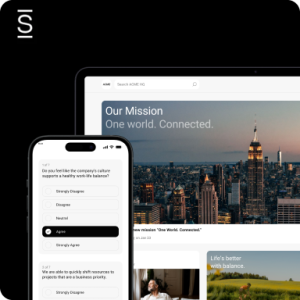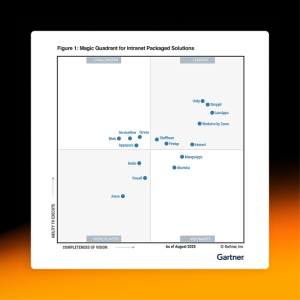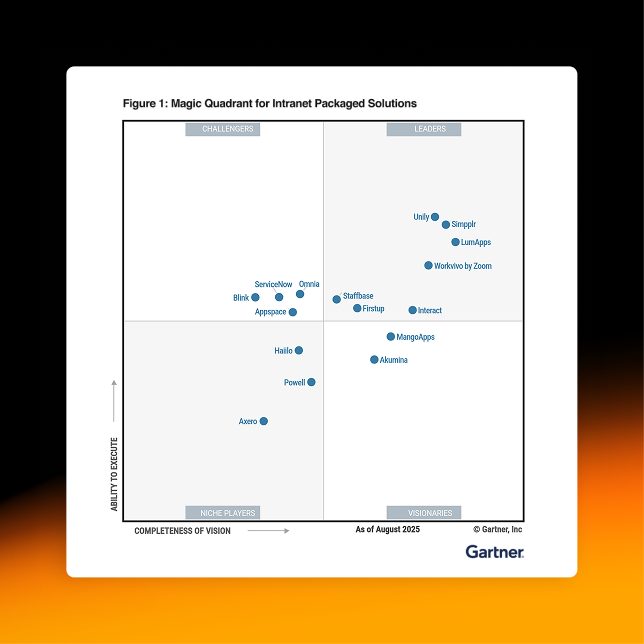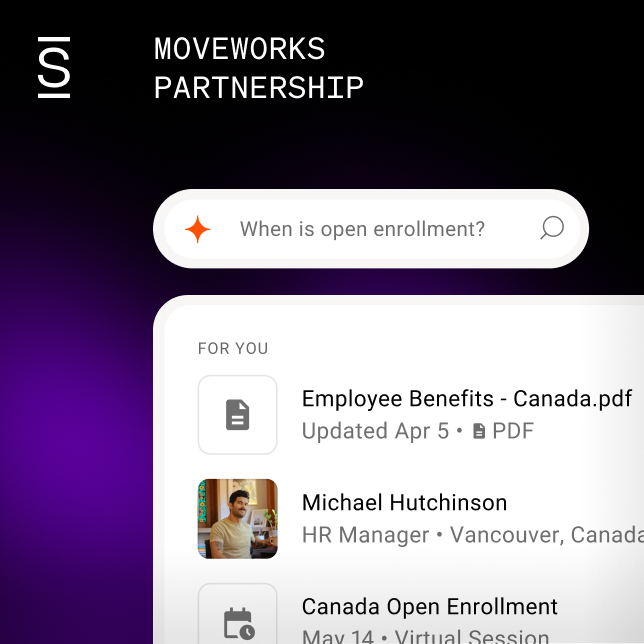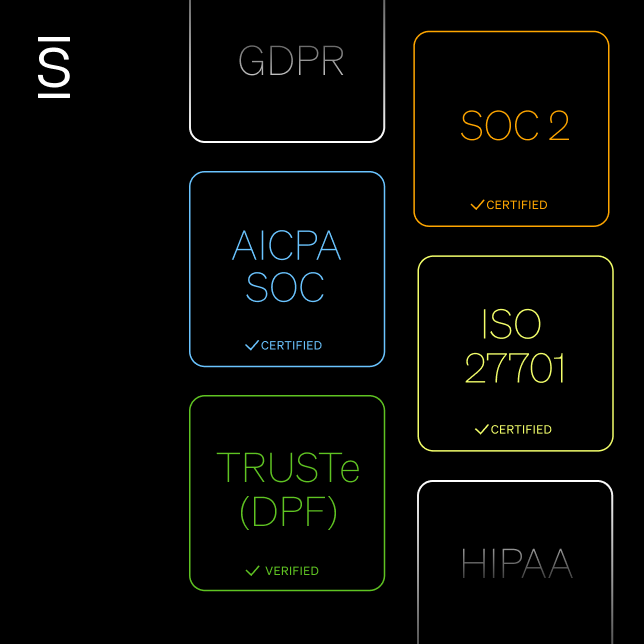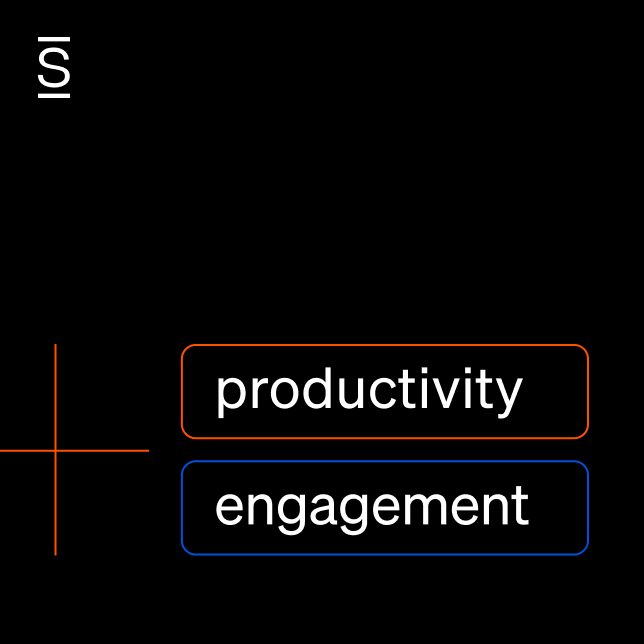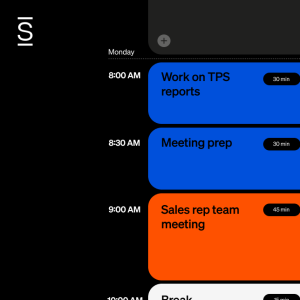Every year, businesses lose millions of dollars due to disengaged employees. Unfortunately, it is not uncommon for an organization to have demotivated and disengaged employees. While there are methods you can take to prevent them from feeling that way, there are also techniques that you can utilize to help re-motivate and reengage those that are currently disengaged. This blog post will share approaches you can leverage to help motivate employees that are disengaged.
This article was updated on 09/13/2023.
“Help your employees find purpose—or watch them leave.” It might sound like a social media rant, but in fact, it’s the title of an article by McKinsey & Company. The survey findings included in the article—about how to motivate employees—can be summarized in a nutshell:
- Employees who feel purpose at work are more productive
- 70% of employees say their purpose is defined at work
In other words, purposeful employees are productive employees—and it’s often work itself that gives them purpose. The problem, of course, is that not every employee or team feels a sense of purpose at work. So, what do motivated employees have that other employees don’t?
Understanding employee motivation
The first thing to recognize is that employees may all work for the same company, but that doesn’t mean they all have the same motivators.
A great manager, for example, can bring significant collaboration skills to their team even if the larger company culture doesn’t currently include that among its strengths. At the other end of the spectrum, an unmotivated manager can undermine employee motivation even in a culture that generally enjoys high levels of job satisfaction.
This is one reason why employee listening is so important in employee motivation strategies—it’s hard to fix a problem until you know exactly where to find it.
Still, a few things do hold true among the wider pool of employees, including the key factors that drive employee motivation.
Psychological factors that drive employee motivation
Every employee motivation strategy starts with these factors. The more of them a company can provide, and the more consistently they are provided, the more motivated employees tend to be.
- Meaningful work: Employees want to feel that their work has a purpose and makes a difference. When employees can see the impact of their contributions, they are more likely to be motivated and engaged.
- Autonomy and empowerment: Employees need a certain level of autonomy and decision-making power in order to feel that their work is meaningful. When employees feel trusted, they are more likely to feel a sense of ownership over their work—and feel motivated to perform well.
- Challenging work: Employees are motivated by tasks and projects that challenge them to expand their knowledge and abilities. Providing challenges can motivate employees to excel—as long as the challenges offer a reasonable stretch without being insurmountable.
- Clear goals and expectations: Employees are motivated when they have clear and specific goals to work toward. It is important for managers to set clear expectations and provide feedback on performance to keep employees motivated and focused.
- Recognition and rewards: Employees want to be appreciated for their hard work and achievements. Recognition and rewards can include anything from verbal praise, certificates, bonuses, or promotions.
- Opportunities for growth and development: Employees need opportunities to learn and grow professionally. This can include training programs, workshops, mentoring, or educational support.
- Positive work environment: All of these factors contribute to a positive and supportive environment, which is key for employee motivation. This also means having good relationships with colleagues, a respectful and inclusive culture, and a healthy work-life balance.
- Effective communication: Finally, employees are motivated when there is clear, open, and transparent communication between managers and employees. Regular feedback, updates on organizational goals, and opportunities for dialogue can enhance employee engagement and motivation.
Bringing intrinsic and extrinsic motivation into alignment
For each of the factors above, there is a clear alignment between the extrinsic motivation being provided by the company and the intrinsic motivation that employees experience internally. When organizational goals are aligned around what employees need, the result is an engaged, productive workforce.
- Intrinsic motivation: the internal drive to engage in an activity or pursue a goal for personal satisfaction, enjoyment, or curiosity. It comes from within the individual and is driven by their own interests, values, and beliefs.
- Extrinsic motivation: the external factors or rewards that drive an individual to engage in an activity or pursue a goal. These can include tangible rewards such as money, status, or recognition, as well as social pressures or expectations.
Both intrinsic and extrinsic motivation can play a role in driving behavior, but research suggests that intrinsic motivation tends to be more effective and long-lasting. This is because when individuals are intrinsically motivated, they are more likely to experience greater satisfaction, engagement, and commitment to their goals or activities.
The best motivational strategies are designed to align external motivators and company goals with intrinsic motivation, giving employees job satisfaction, a sense of accomplishment, and a better quality of work life.
Five proven ways to motivate staff
What are five ways to motivate staff? These five strategies have been used by many businesses with proven success.
- Provide opportunities for growth: This strategy checks several employee motivation boxes. Not only is a career development path motivational in itself, but training and workshops can also offer interesting challenges. Setting clear goals and expectations around training sessions and recognizing employees for completing them will take the strategy even further.
- Recognize and reward achievements: Acknowledge employees’ contributions through verbal praise, awards, or incentives—not just privately but publicly, through the company’s intranet or newsletter. Recognition that ties efforts specifically to results helps employees find that critical sense of purpose in their work.
- Foster a positive work environment: While a positive work environment may feel somewhat subjective, studies have shown that, in fact, it’s relatively easy to define. A respectful, inclusive corporate culture that values a healthy work-life balance and open communication has been proven to boost employee motivation.
- Set clear goals and expectations: Well-defined goals give employees a sense of purpose and direction. On a day-to-day level, project management tools that define tasks clearly and transparently add to effective communication, especially when those tools integrate with the company intranet, giving employees a centralized place to check on tasks, collaborate, and organize their day.
- Promote employee well-being: Corporate initiatives such as wellness programs, flexible schedules, and mental health support show employees that their health and well-being matter to the company. This heightens employees’ sense of purpose and further contributes to a positive work environment.
The best way to employee motivation
The best way to motivate employees at work is not to choose just one method. Human beings may have similar needs across the board, but the ways in which those needs are expressed and met vary wildly from person to person. In other words, implement as many of the five listed strategies as possible, and tailor each motivation technique to specific teams and individuals.
By tailoring their motivation techniques to different people and situations, leaders can tap into the unique needs and desires of each individual, increasing the likelihood of success. It also shows that leaders are attentive and empathetic, helping to create a positive and engaging work environment that can foster satisfaction and productivity.
Implementing SMART goals
When it comes to employee goals and expectations, make sure they’re SMART—an acronym that can help managers remember these five important goal-setting principles:
- Specific: Goals should be clearly defined, focusing on a particular outcome or objective.
- Measurable: The progress and success of each goal can be objectively tracked and quantified.
- Achievable: Goals should be realistic and attainable with the resources and capabilities that the team has available.
- Relevant: Goals should have a clear purpose that is aligned with larger objectives or priorities.
- Time-bound: Goals should have clear time-based expectations, providing a clear time frame for completion.
Strategies for motivating unmotivated employees
Disengaged employees may require going the extra mile. For disengaged employees, motivation levels are low. Extrinsic rewards and positive feedback aren’t likely to be enough. These individual employees are likely to need a personal level of intervention to reignite employee engagement.
What causes employee disengagement?
Some typical problems that could cause a low level of employee engagement include:
- Poor leadership and management
- Lack of feedback
- The inability for career development
- Dissatisfaction with pay and benefits
- Having a stressful work environment
- Not having a sense of purpose
How employee disengagement impacts your organization
In addition to organizations losing millions of dollars a year due to unmotivated and disengaged employees, many other problems can also arise. Some consequences would be:
- Negative customer experiences
- Higher employee turnover rate
- Decreased productivity and poor work quality
- Failure to meet overall business goals
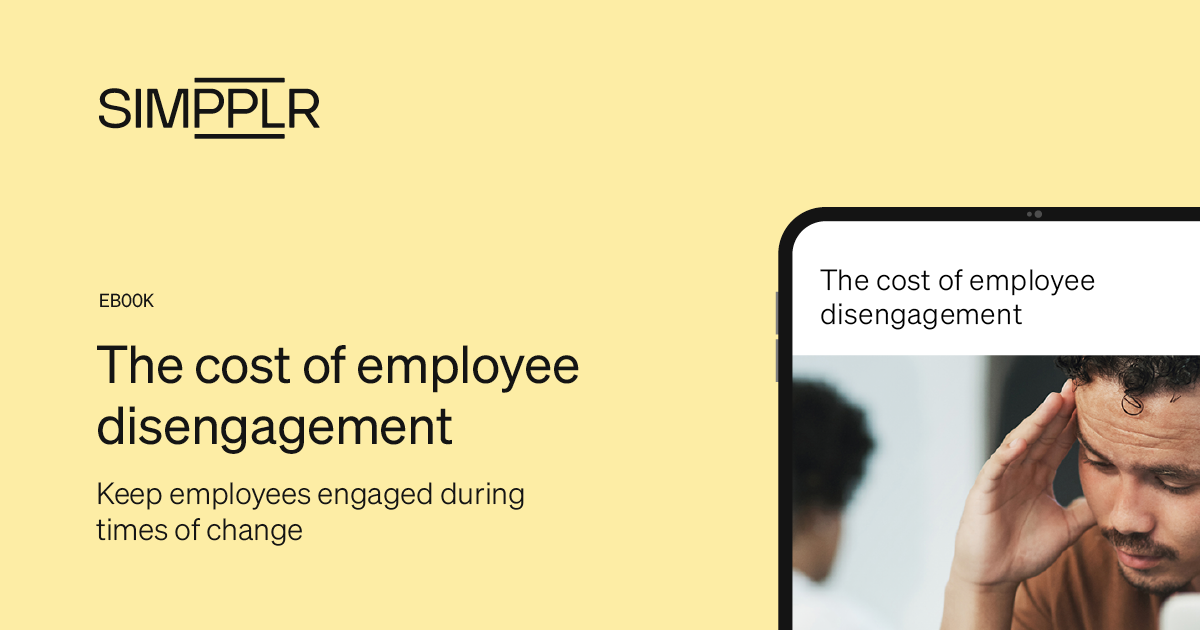
How do you motivate unmotivated employees?
Here are three employee motivation techniques for unmotivated employees:
- Identify the root cause: Is the lack of motivation rooted in their personal lives or in their work lives? Are they frustrated in their personal goals or their career goals? Sometimes, identifying the problem can point to a solution.
- Offer support and coaching: As a general rule, motivated employees feel seen. For unmotivated employees, providing mentorship, additional training, or one-on-one meetings can be motivating factors that help them regain their enthusiasm.
- Provide autonomy: Opportunities for employees to think for themselves and introduce innovative ideas can help uplift entire teams of unmotivated employees. Giving employees more control over tasks and projects can rekindle their sense of responsibility.
Role of HR and IC in employee motivation
Human resources (HR) and internal comms (IC) can do a lot to reduce employee turnover, enhance employee productivity, and improve employee morale. So, how do HR managers motivate employees? Here are three types of employee motivation that can help.
1. Effective communication
Improve motivation and employee retention rates by facilitating open dialogue, addressing concerns, and making employees feel valued and heard. When annual reviews focus exclusively on extrinsic rewards, employee morale can suffer. Turn that communication channel around with employee feedback and employee satisfaction surveys that focus on the quality of their workplace experience.
Simpplr’s modern, AI-powered intranet platform helps organizations communicate at scale. Surveys offer active listening, but the platform also offers passive listening, harnessing the power of AI to parse through thousands of employee intranet actions and engagements to identify sentiments and trends that active listening can easily miss.
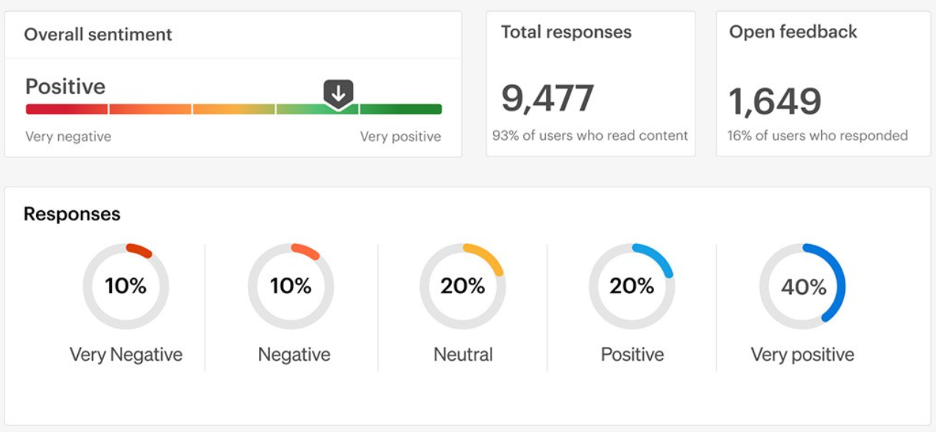
2. Performance recognition programs
Effective employee recognition programs can lead to a surprising 31% reduction in employee turnover. Unfortunately, many of these programs are implemented through stand-alone software that isn’t designed to be a functioning part of an integrated tech stack—something that’s especially important for enterprise-level organizations.
That’s why Simpplr’s Employee Recognition solution is designed to work natively with the AI-powered platform, making it an integrated part of the company’s digital workflow. It publicly celebrates employee efforts, achievements, and milestones, and even allows employees to offer peer-to-peer recognition.
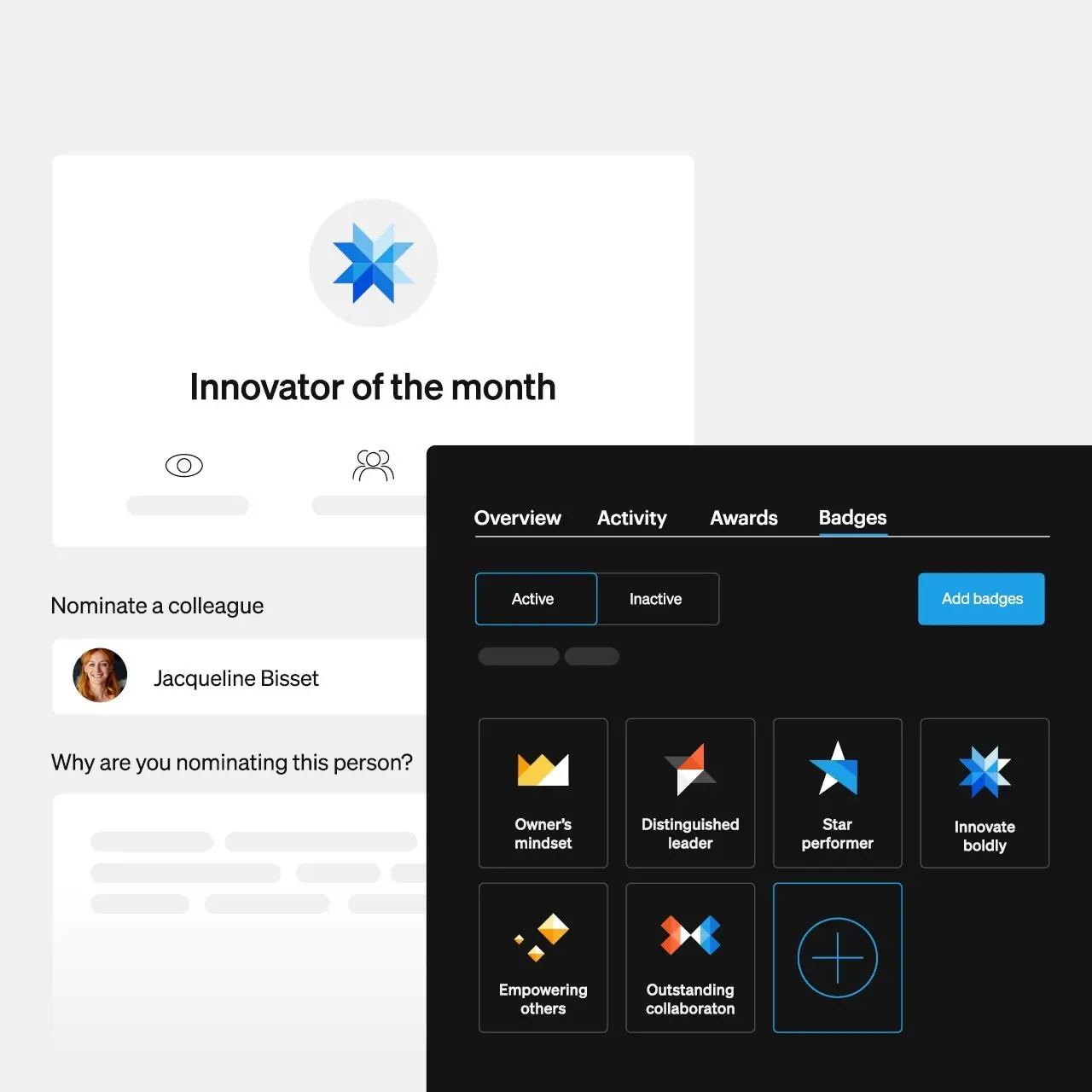
3. Professional development initiatives
Motivated teams tend to have professional goals—providing opportunities and pathways for professional growth can go a long way toward improving employee motivation. HR managers can collaborate with departments to design career paths and career growth opportunities, leading to improved employee motivation levels and more engaged employees.
Conclusion
Motivational techniques based on intrinsic motivators can drive employee engagement to new heights. HR managers and leaders can play an essential role in employee motivation by implementing a modern, AI-powered intranet like Simpplr.
- Surface real-time employee insights, even at scale
- Help employees feel heard and motivated
- Celebrate achievements and cultivate a sense of community
- And much, much more
Learn more by exploring these fourteen game-changing benefits of employee communication apps, or watch our on-demand webinar Engage and Retain Employees – Using the Company Intranet.


